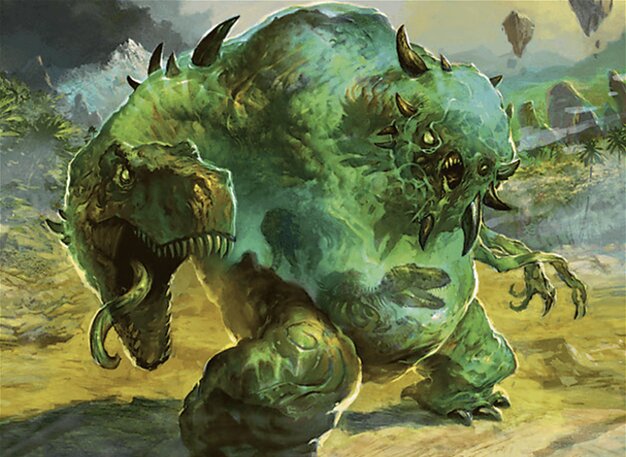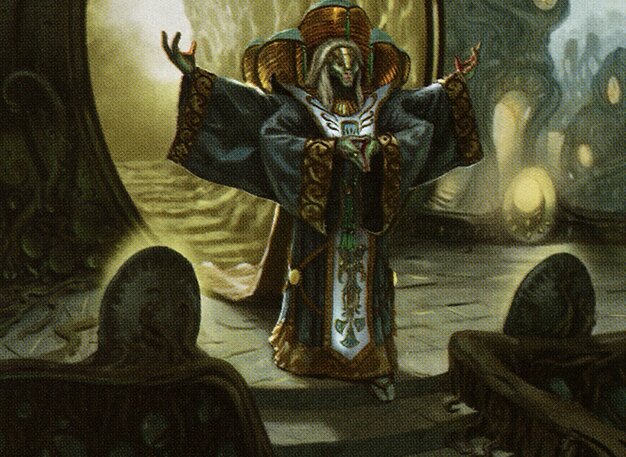Deck & Commander Strategies

The Mimeoplasm
Utilizes graveyard milling and reanimation to assemble a unique, powerful ooze creature, winning through graveyard synergy and attrition.

Teval, Arbiter of Virtue
Focuses on casting spells with delve to reduce costs, balancing life payment with efficient tempo plays and control elements.

Kaseto, Orochi Archmage
Leverages Simic creature synergies and value engines to generate incremental board advantage, avoiding high-powered combos like infect.

Moritte of the Frost
Builds a tribal creature deck emphasizing diverse creature types and synergy to pressure opponents and maintain board presence.
Gameplay Insights
- 1
Balancing deck power levels ensured a more interactive and fair multiplayer experience, highlighting the importance of tuning commanders for group play.
- 2
Mimeoplasm’s graveyard milling and reanimation strategy served as a unique midrange threat, forcing opponents to adapt their removal and interaction accordingly.
- 3
Teval’s delve mechanic required careful life total management, adding tension to spellcasting decisions and resource allocation.
- 4
Removing overpowered cards like Platinum Angel and Hermit Druid from PointCrow’s deck curbed runaway game states and promoted closer competition.
- 5
Kaseto’s exclusion of infect and focus on classic creature synergy demonstrated a balanced approach to a traditionally combo-oriented deck.
- 6
Moritte’s creature tribal focus showcased the power of synergy even in a deck constrained to mostly creatures with diverse types.
Notable Cards
-

The Mimeoplasm
-

Teval, Arbiter of Virtue
-

Kaseto, Orochi Archmage
-

Moritte of the Frost
-

Stitcher's Supplier
Gameplay Summary
The game featured four players with decks balanced to a medium power level, aiming for a more equitable Commander experience.
Slimecicle piloted The Mimeoplasm, focusing on graveyard interactions and milling opponents to assemble a unique ooze creature as a win condition.
PointCrow ran Teval, Arbiter of Virtue, a deck built around spells with delve enabled but with a life payment drawback, emphasizing efficient resource use and tempo.
The Professor commanded Kaseto, Orochi Archmage, leveraging a Simic (blue-green) value engine centered on creatures and synergy without relying on infect, aiming for incremental advantage and board presence.
Derik played Moritte of the Frost, a tribal-focused deck almost entirely composed of creatures, aiming to capitalize on creature synergies.
The players agreed on deck adjustments to ensure a balanced and fun game, notably toning down overly powerful cards from PointCrow's deck and adjusting others accordingly. Early turns focused on establishing board presence and value engines, with Mimeoplasm setting up graveyard resources and milling, while Kaseto and Moritte developed their creature synergies.
Teval applied pressure with spells and life payment management.
Key gameplay moments involved managing interaction and tempo to prevent any single player from dominating early.
The Mimeoplasm’s graveyard-centric strategy stood out as a unique approach, with milling and assembling a composite ooze threatening to close the game.
Overall, the game showcased a well-balanced multiplayer dynamic emphasizing synergy, resource management, and incremental advantage, rather than explosive combos or overwhelming power plays.






















![Commander VS S5E1: Liliana vs Tasigur vs Kangee vs The Mimeoplasm [MTG Multiplayer] thumbnail](https://i.ytimg.com/vi/u35l-cgkQEY/sddefault.jpg)
![Commander Versus Series: Mimeoplasm v. Melek v. Maelstrom Wanderer v. Prossh [MTG Multiplayer] thumbnail](https://i.ytimg.com/vi/H3JROxdcaPo/sddefault.jpg)

















